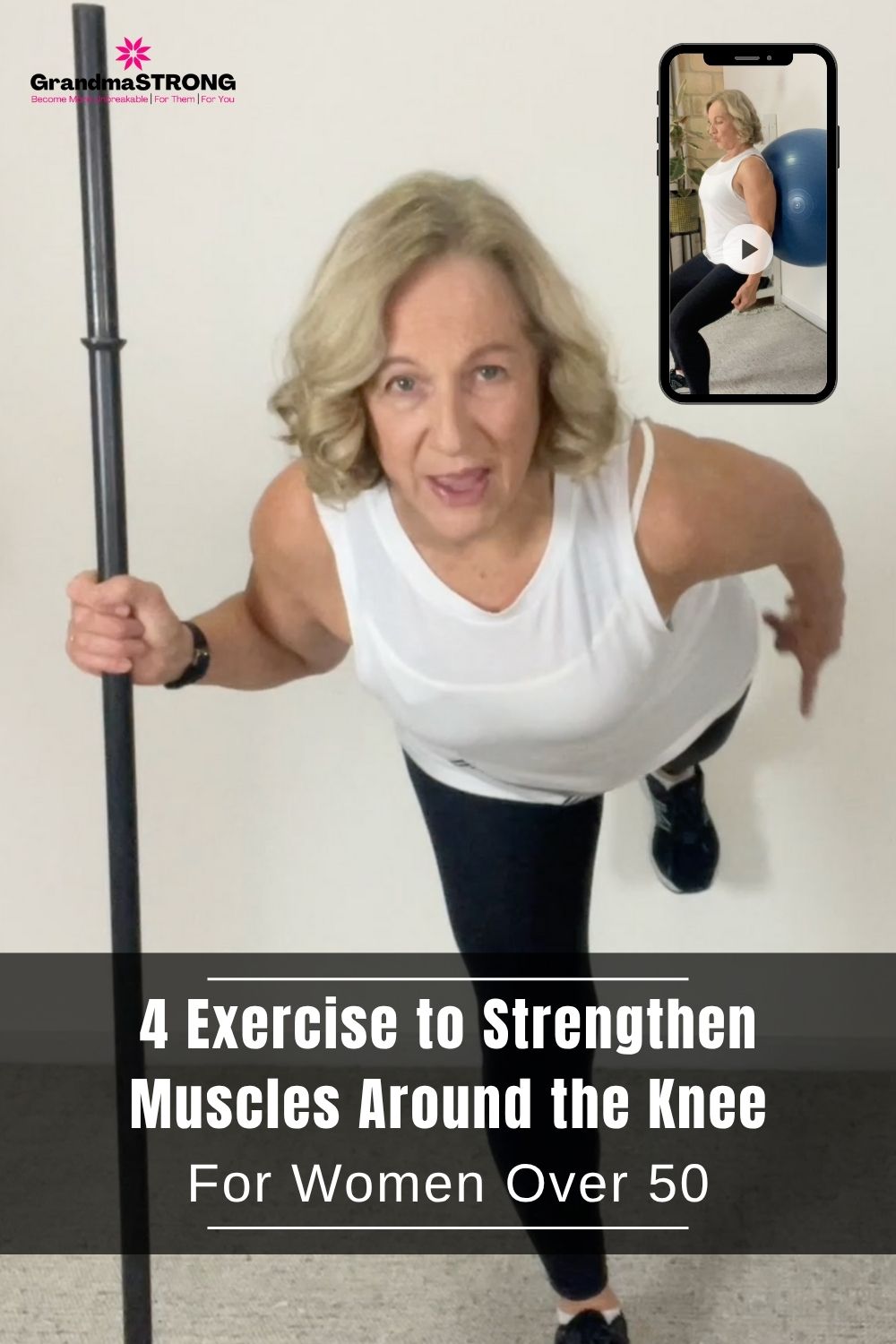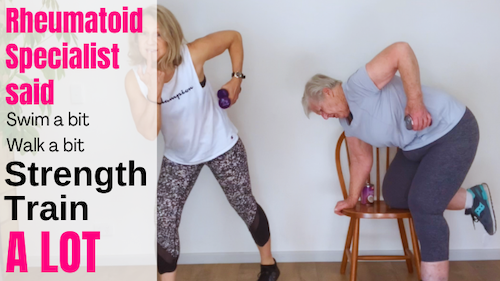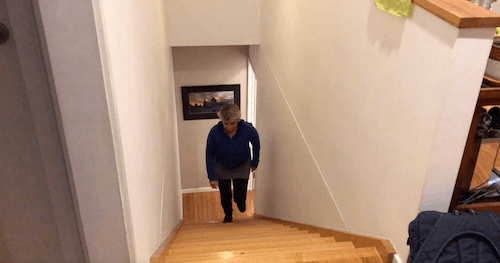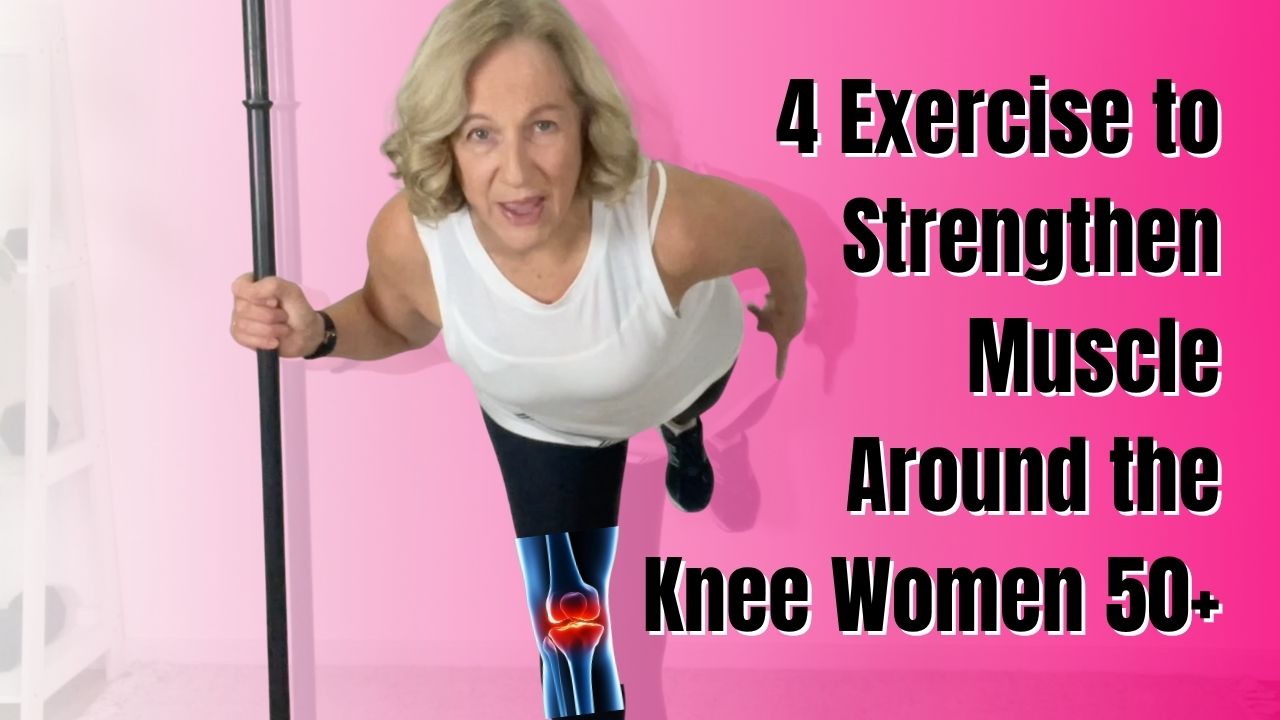
Have you got knee pain that seems to be there all the time, even when you're sleeping? It limits all your activities and it flares up when you squat, climb stairs or you're just walking. Well, you're not alone and you don't have to just put up with it.
So whether your in your 50s, a senior, elderly, or dealing with an arthritic knee condition (whichever fits), today in this '4 exercises to strengthen muscles around the knee' lesson, I'll show you some exercises that have worked for my clients with knee pain, plus four simple but powerful movements to reduce the pain, strengthen the right muscles and keep you doing the things you love, that you can start today, no matter your current fitness level.
So let's get strong, not just for now, but for the decades and decades to come.
Watch: 4 Moves to Strengthen & Support Your Knees
Knee strengthening success stories, Click Image/Link
Ready, let's jump into the '4 Exercises to Strengthen Muscle Around the Knee' lesson:
So let's get right into it with four moves that we can do to help those gain muscle and get stronger, so you can be the strongest you can be into your latter decades.
EXERCISE 1: Wall Squats
1. Why it helps:
Builds isometric strength and reduces load through a controlled range of exercise that in-turn strengthens the balance and stability muscle chain through the leg, where the knee is a central pivot point.
So our first thing is a wall squat. I love wall squats because you can actually hold this in an isometric hold and people with knee pain often do really well with this. So time under tension can still be working around that knee.
2. Wall squat:
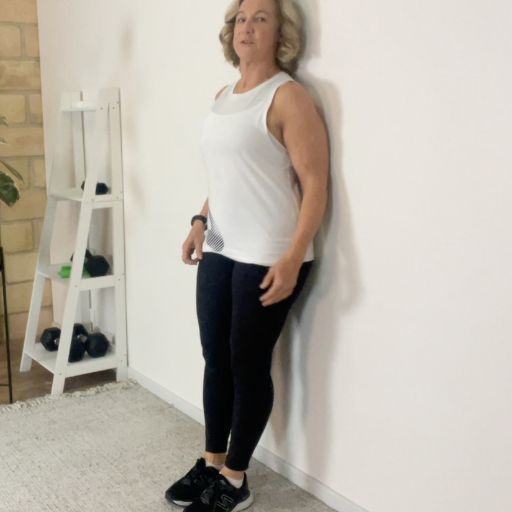
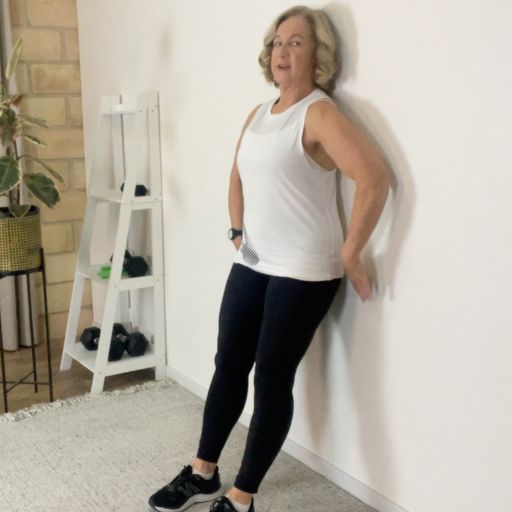
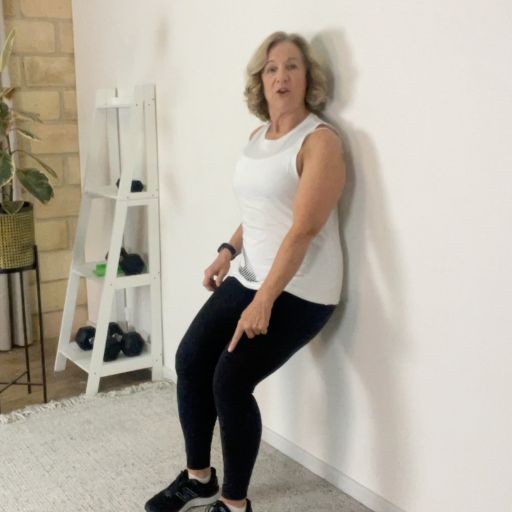
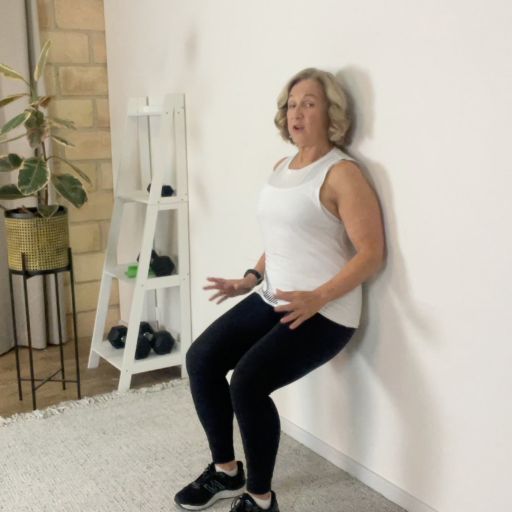
- So we're going to have our back on the wall, first of all.
- Then you're going to walk out our feet, so you're at a lean, but our bottom is still against the wall.
- And you're just going to slide down the wall. NOTE: You're only going to slide down the wall to the point you don't get pain in your knee.
- Once you're in that comfortable position see if you can hold there for 20 to 30 seconds.
- Then come back up again, do maybe six to eight of those.
3. Fit-Ball wall squat:
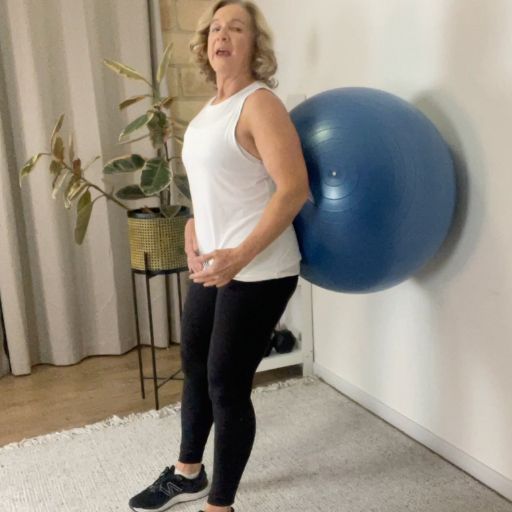
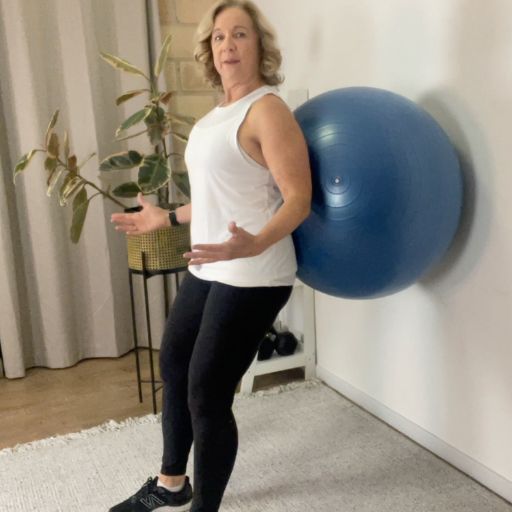
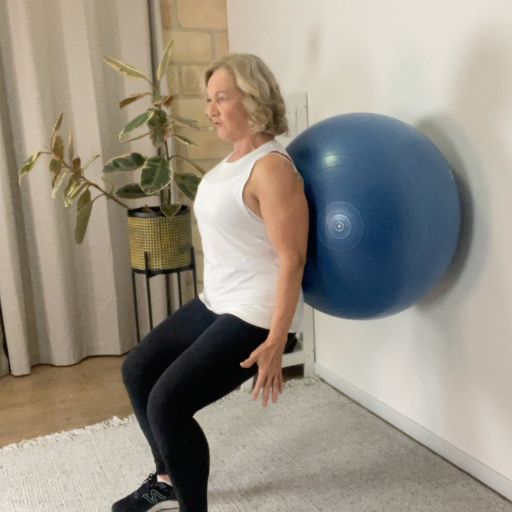
- If you did want to, you can have a fit ball behind you and making sure that's in the curved part of your back.
- And then again, walking yourself out a bit, leaning back.
- And then we're just going to come down to where you feel comfortable. Now, you may not feel stable on a ball, so that's fine, don't do this then.
- Again, hold for 20-30 sec and repeat 6-8 times
4. One-Legged wall squat:
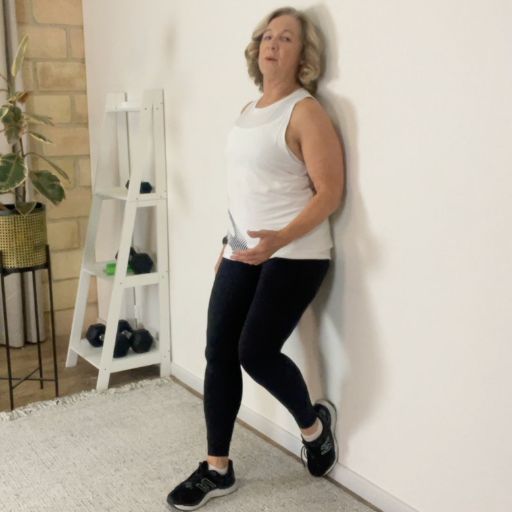
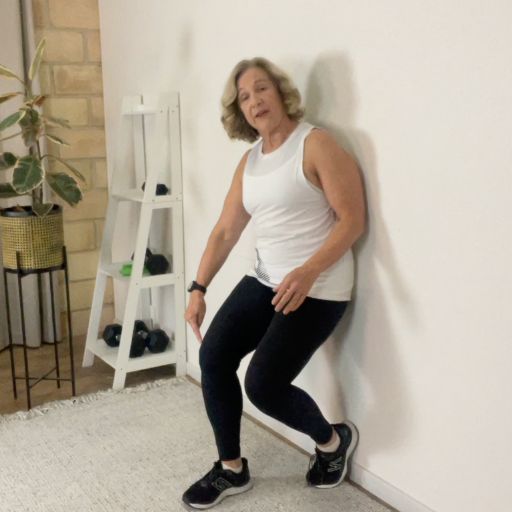
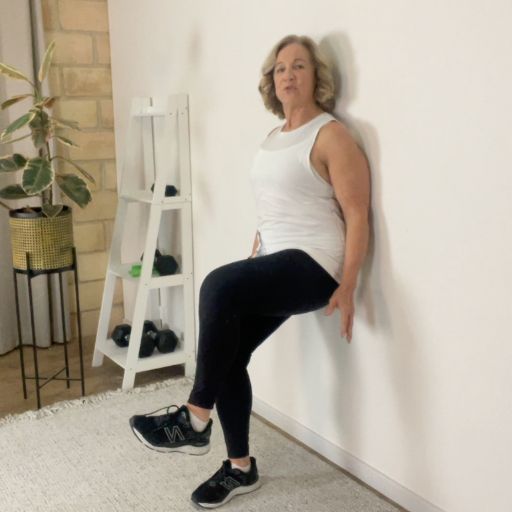
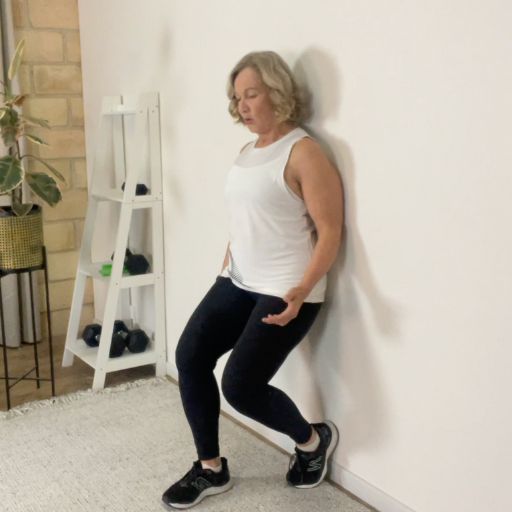
- So I'm going to be taking just one leg behind, a toe touching behind.
- And I'm just going to take myself down on the wall. Now, we're just going to mainly work onto this leg. And again, only going down to where we don't feel pain.
- VARIATION: You can either have this foot behind, or you can have this leg up, so your choice, wherever you prefer that leg.
- And then we're just going to hold for 20-30 sec and repeat 6-8 times.
- This could also be done with the fit-ball behind.
5. Wide wall squat:
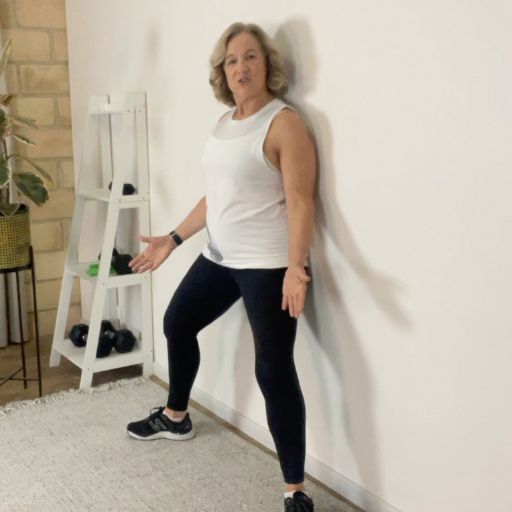
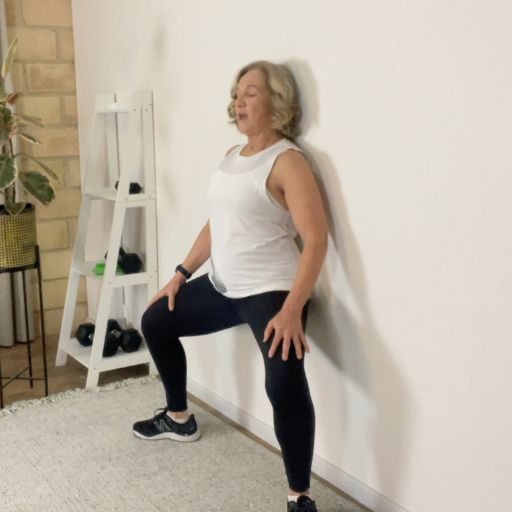
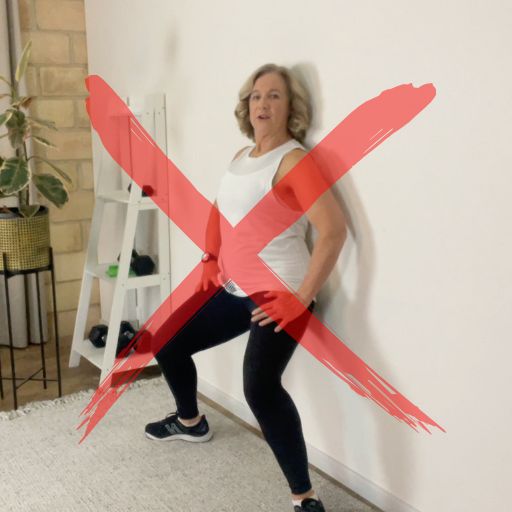
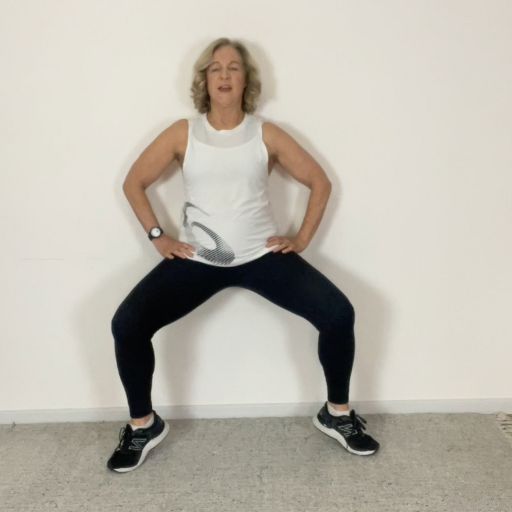
- So we're going to take these knees out to the side.
- And I'm just going to slide down the wall and hold there. Now, I can feel these inner thighs working quite hard.
- Making sure you're not going to let those knees cave inward. Knees should be inline with the toes.
- VARIATION: Whilst down you can raise the heels slightly and hold.
- This could also be done with the fit-ball behind.
EXERCISE 2: One-Legged Deadlift
1. Why it helps:
Strengthens hamstrings and glutes, and as a consequence it improves balance and alignment down the muscle chain to the knee.
So I just want you to think about having some support, a chair or against the wall. And I want to make sure that as you come forward, that I've got this line down my back.
2. Basic one-legged deadlift technique:
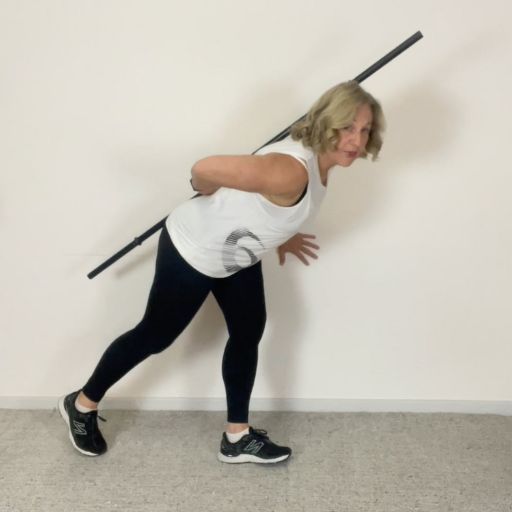
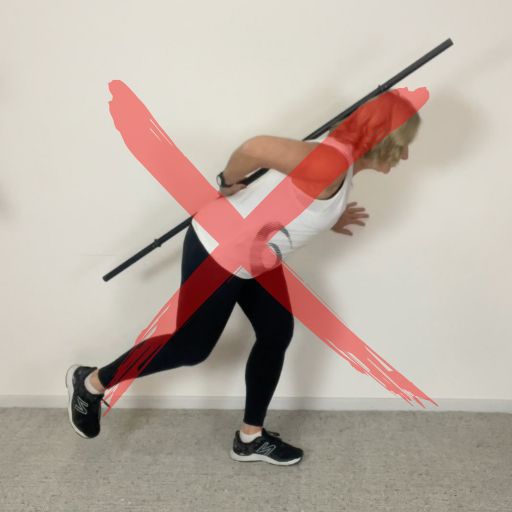
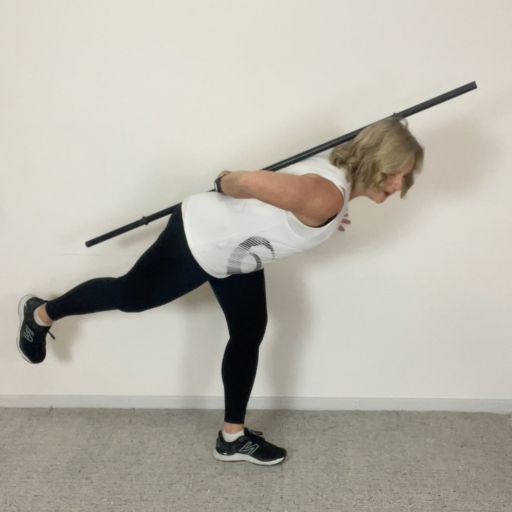
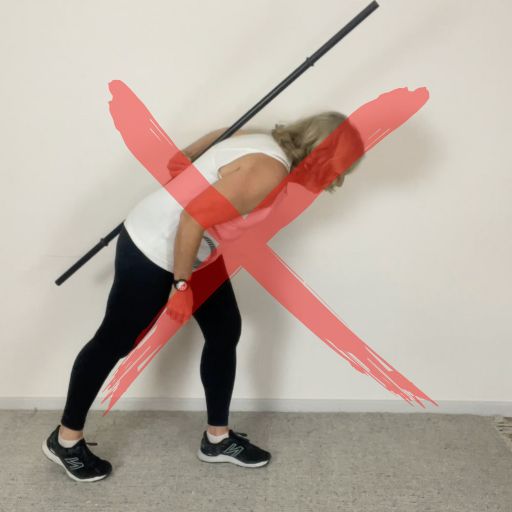
- I've got this rod down my back, and it's touching my head, my shoulders and my back, and with this leg in front with a slight bend.
- Don't bend the front leg as if doing a squat, we're not trying to actually bend it into a squat.
- We're just going to hinge forward and then take a leg back.
- Don't tilt the head and round out, make sure you keep that line from head to upper back to butt, as the pole highlights.
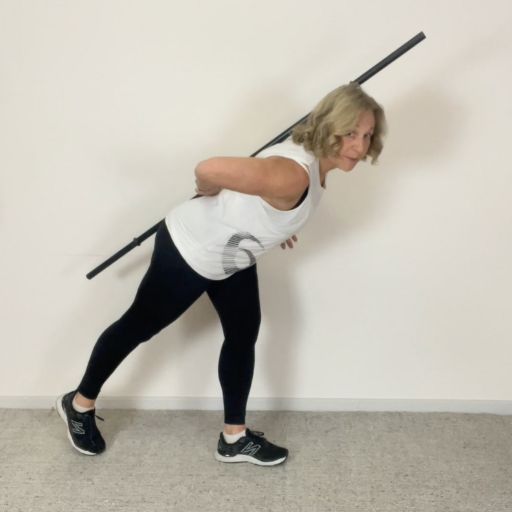
5. VARIATION: If you don't feel comfortable taking the leg back, you can tap that legs toe on the floor
You can see what I mean by flat back. So we're going to take the bulk of the weight into this front leg with a slight bend in it and trying not to rotate either way
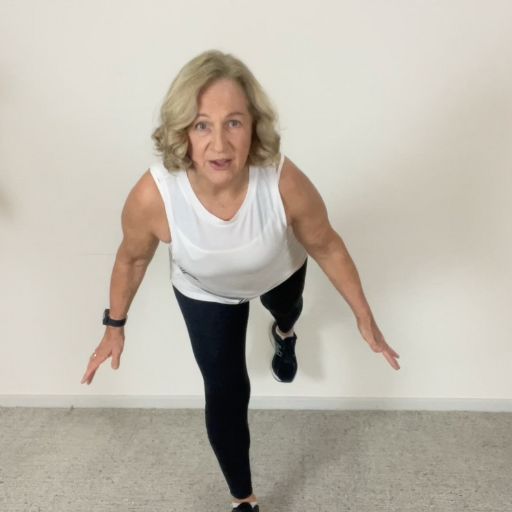
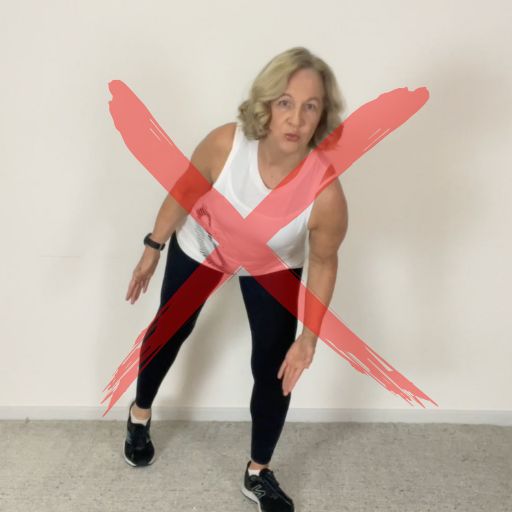
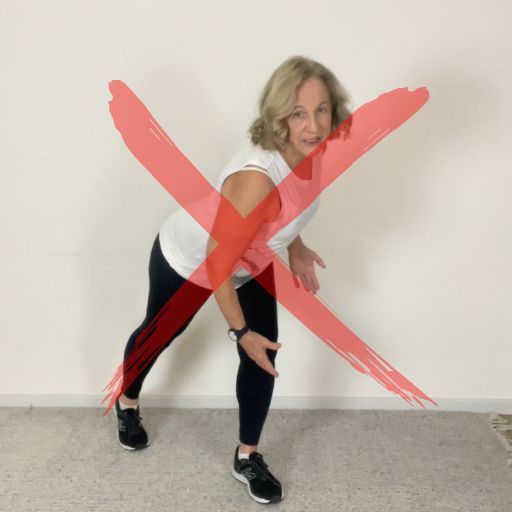
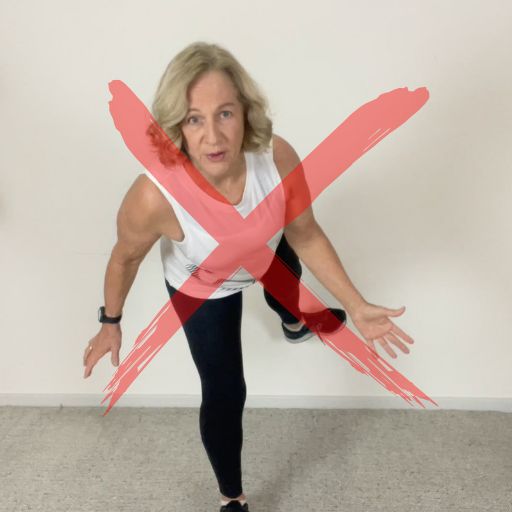
- So trying to stay nice and straight hinging forward, leg behind in alignment, and foot in alignment.
- Don't rotate body to the left.
- Don't rotate body to the right.
- Don't turn the foot to the left or right when you're in the full hinged leg up position.
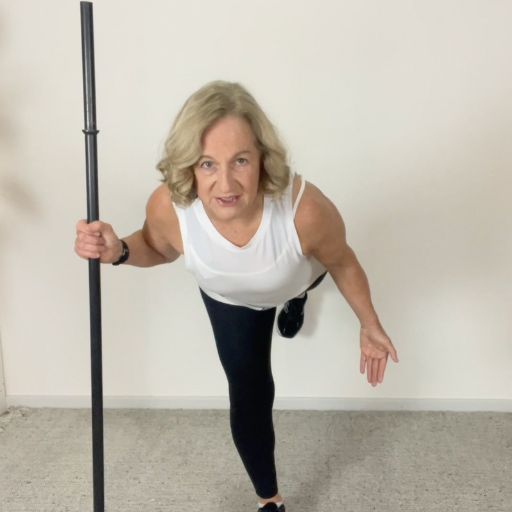
5. VARIATION: If you feel unstable try using a pole/broomstick at first to help balance.
3. Calf Raises:
EXERCISE 3: Calf Raises
1. Why it helps:
Strengthens calf muscles that support knee function.
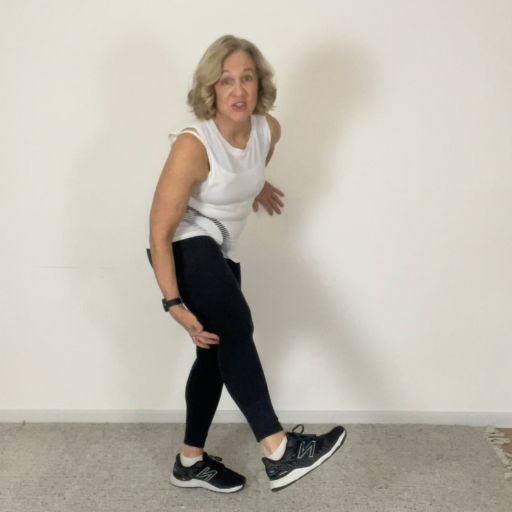
So calf raises are one of those things that is really good because our calf, the gastrocnemius attaches into our knee. And so by working this calf, we can actually make that whole knee stronger as well.
So calf raises are very simple.
2. Basic calf raises technique:
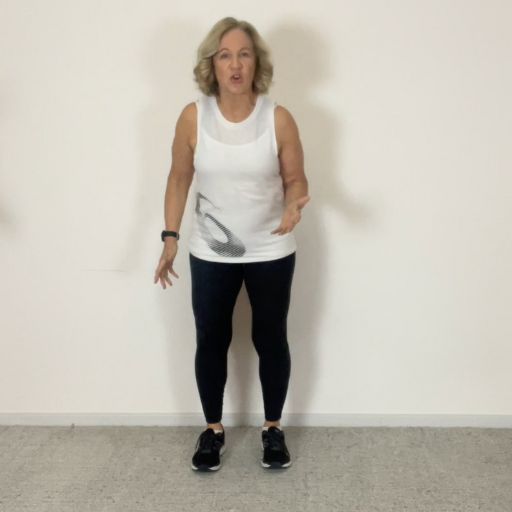
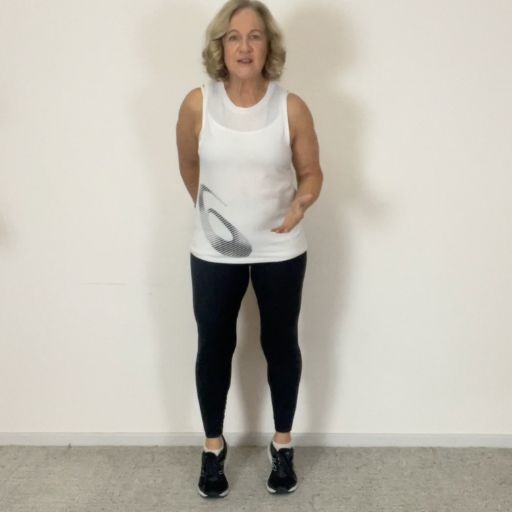
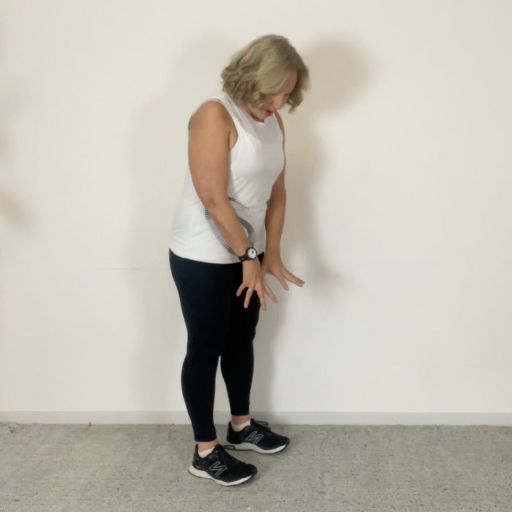
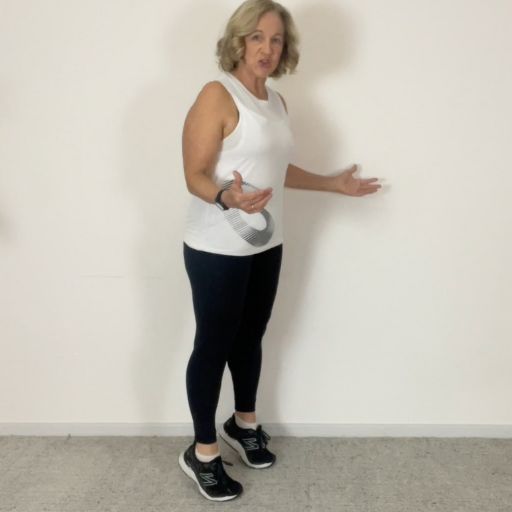
- Stand straight and upright. If you have balance issues be adjacent to a wall for support.
- And simply raise heels up, and you're on the balls of your feet.
- Again, standing upright, with balance support if needed.
- And raise heels up so you're on the balls of your feet, NOT toes.
- NOW, once up, hold for 2-3 seconds then down.
VARIATIONS:
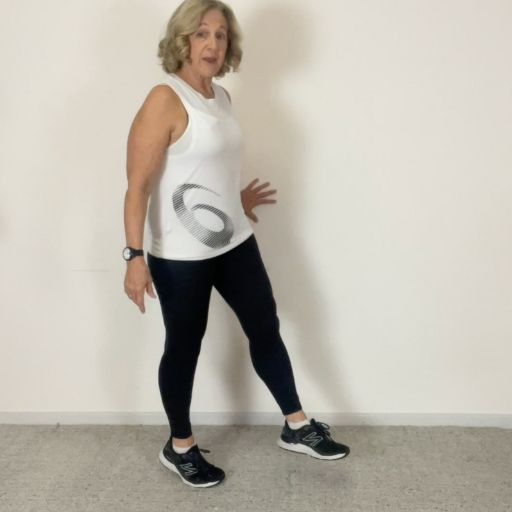
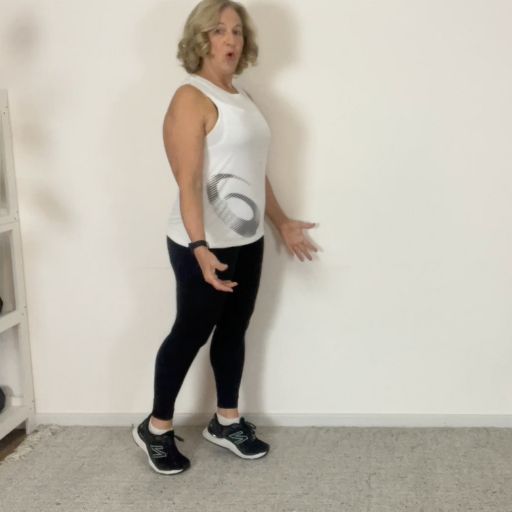
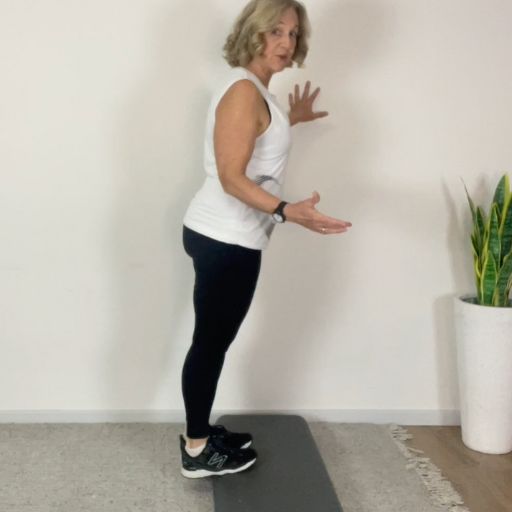
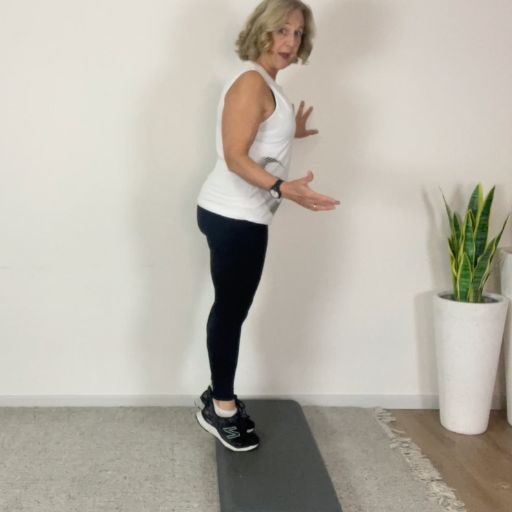
- Try one-legged calf raises.
- Walking on balls of feet.
- Using a step.
EXERCISE 4: Ankle Weights - Sitting-Standing-Floor Leg Raises
1. Why it helps:
Activates quads, hamstrings, glutes and inner thighs to support knees.
2. Basic ankle weights - SITTING leg raises:
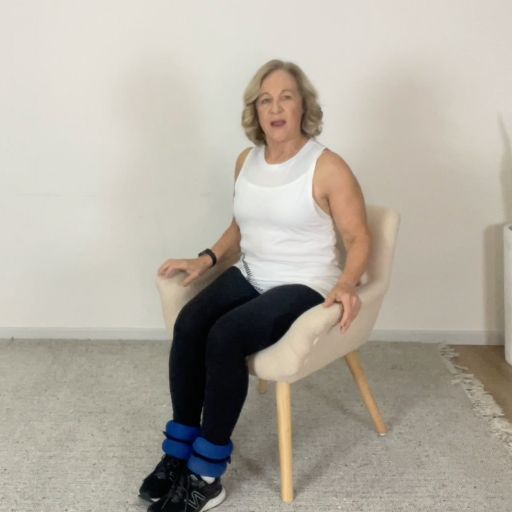
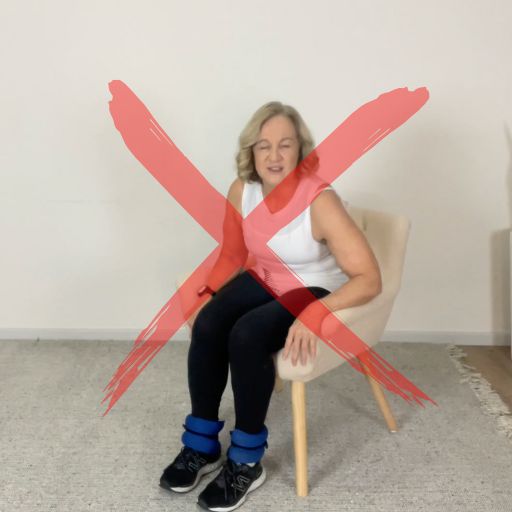
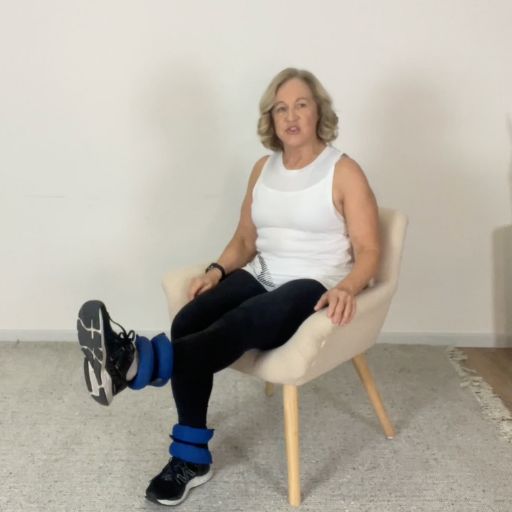
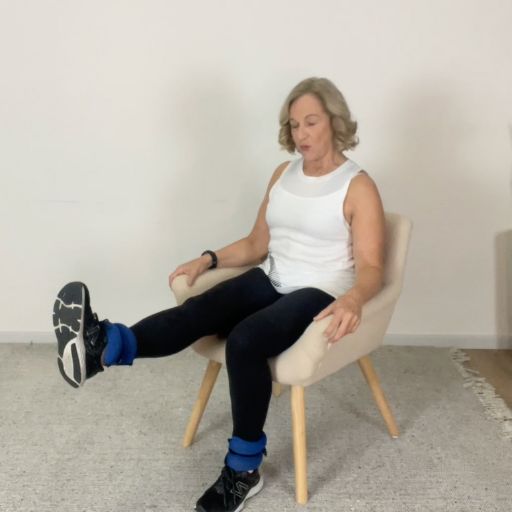
- I'm just going to sit right back in my chair, ankle weights on.
- Don't slump, hold yourself up nice and tall.
- And I'm just going to lift a leg up and bring it backdown. So you can press that leg down into the chair and lift.
- Repeat that 8-10 times with both legs.
- You can even try and hold the leg in the up position for 3-5 seconds then put down.
- REMEMBER though we don't work through pain, so if any of this hurst, reduce the movement range, then progressively increase over weeks to strengthen range.
- NOTE: If you already have big legs you may not need any weight on the ankles doing this, so try and see how you go.
VARIATION:
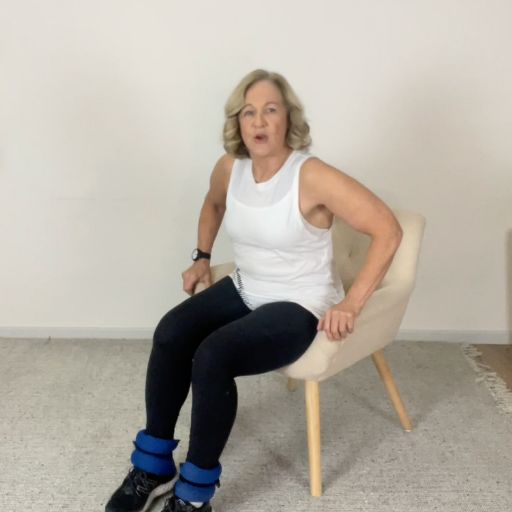
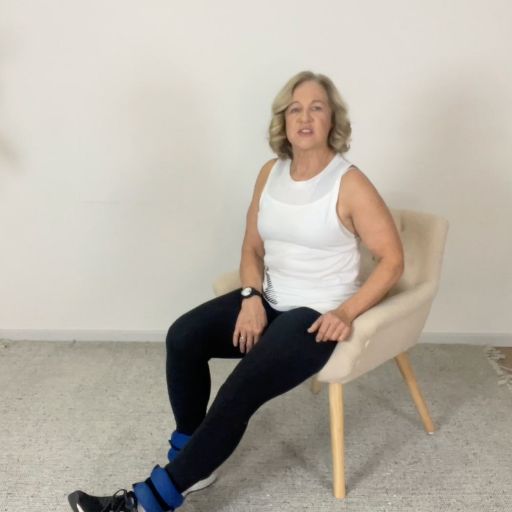
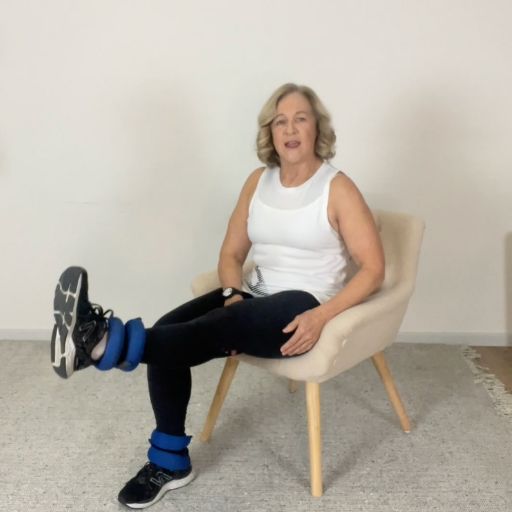
Seated Straight leg raises:
- Moving forward in the chair, so you're sitting closer to the front.
- Extend a leg fully out so it's straight.
- Then raise up to horizontal, hold for a second and down again.
3. Basic ankle weights - STANDING leg raises:
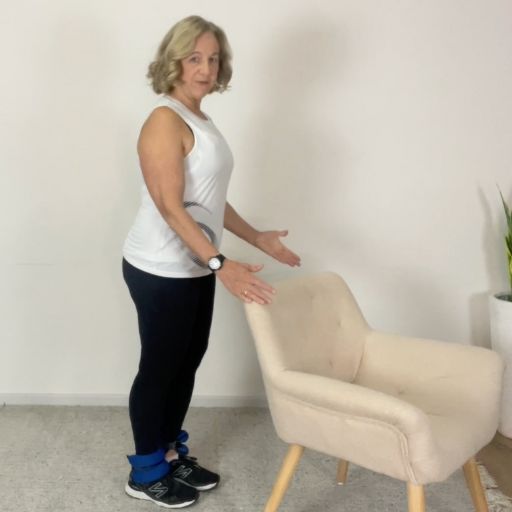
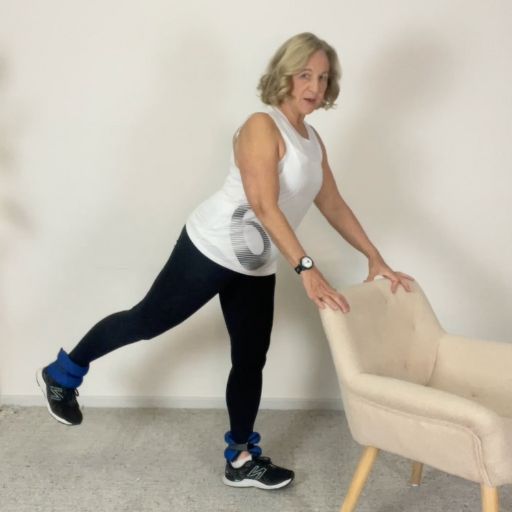
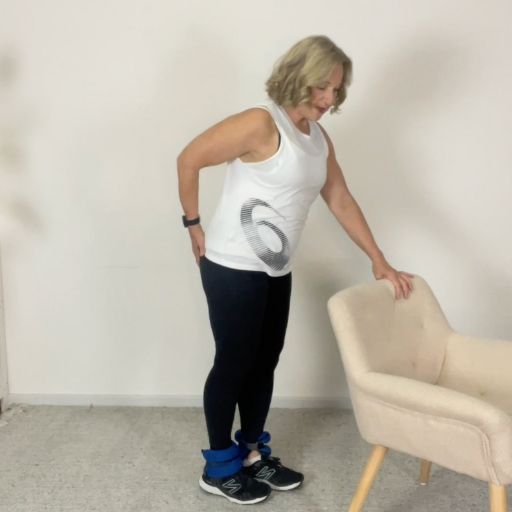
Reverse Leg raises:
- So you can have your chair to help support you or hold onto the wall.
- Extend a leg fully behind so it's straight, hold and return.
- Now remember, before we lift the leg squeeze your glutes to activate them.
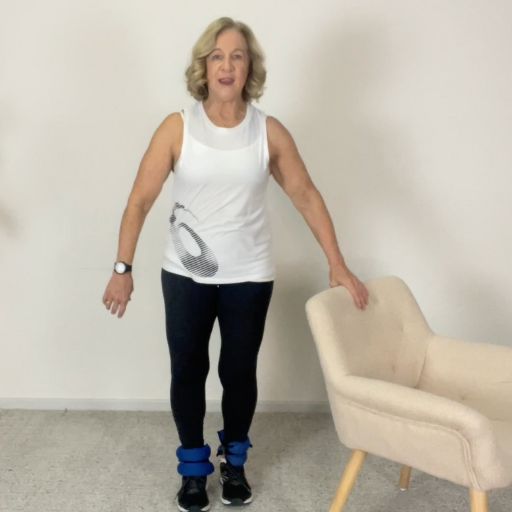
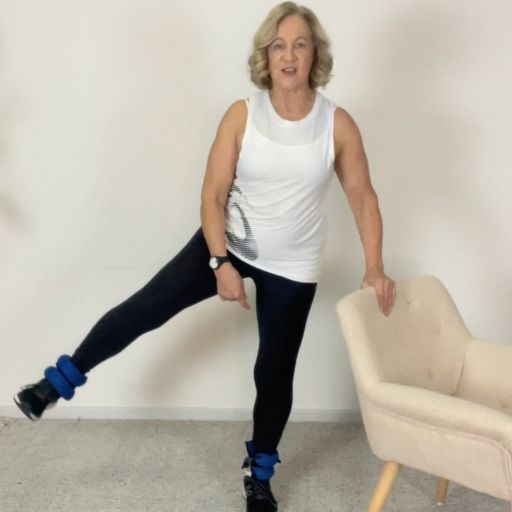
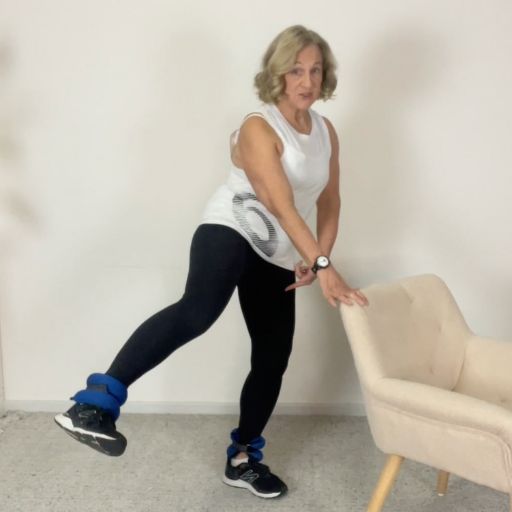
Side Leg Raises:
- So you can have your chair to help support you or hold onto the wall.
- Extend a leg fully to the side so it's straight, hold and return.
- You can have the still leg slightly bent at the knee.
- Now remember, before we lift the leg squeeze your glutes to activate them.
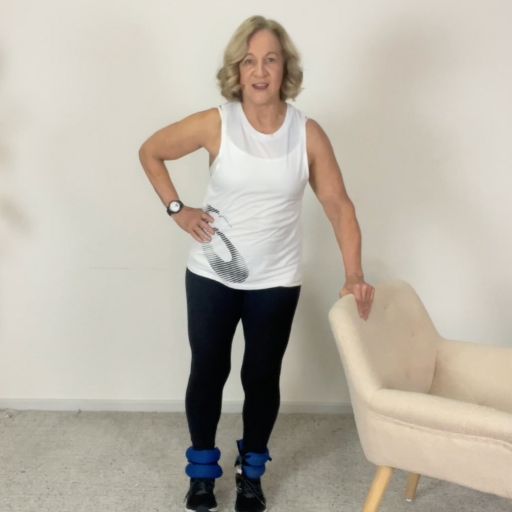
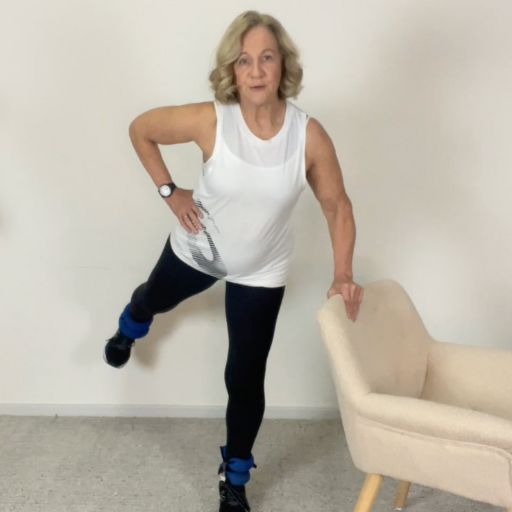

45° Leg Raises:
- So you can have your chair to help support you or hold onto the wall.
- Extend a leg fully on a 45° so it's straight, hold and return.
- Now remember, before we lift the leg squeeze your glutes to activate them.
4. Basic ankle weights - FLOOR leg raises:
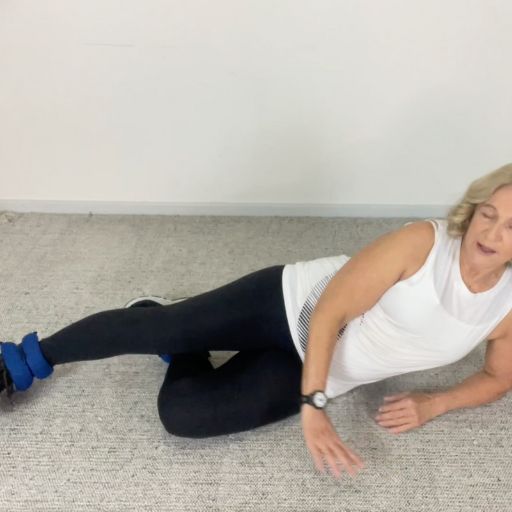
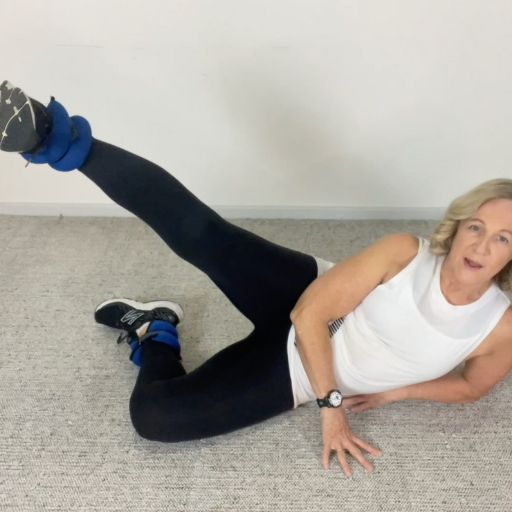

Side Leg Raises:
- So lying on your side on the floor, and one leg tucked under the other.
- Lift the top leg up so it's straight, hold and return.
- Now remember, before we lift the leg squeeze your glutes to activate them.
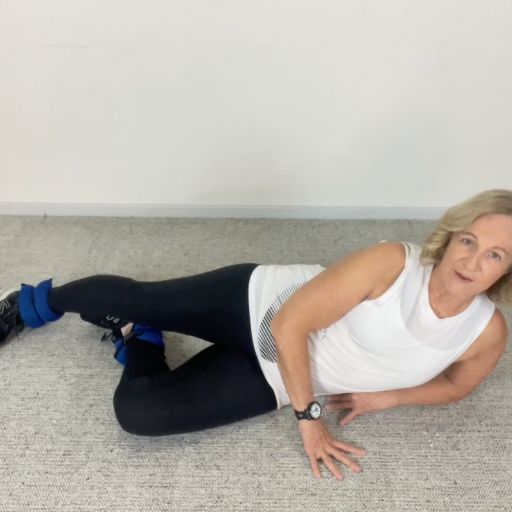
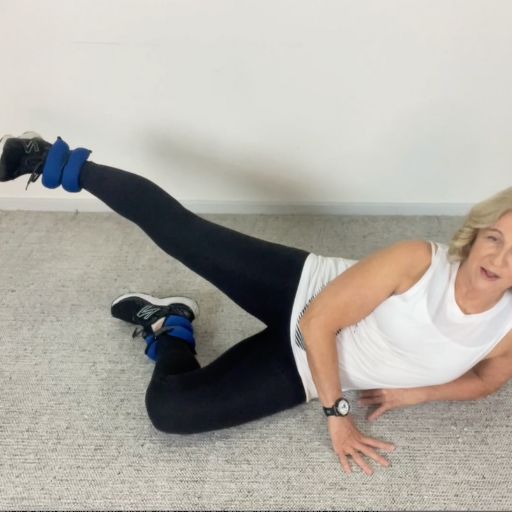

Behind 45° Leg Raises:
- So lying on your side on the floor, and one leg tucked under, and the top leg 45° behind.
- Lift the top leg up so it's straight, maintaining the 45° angle, hold and return.
- Now remember, before we lift the leg squeeze your glutes to activate them.
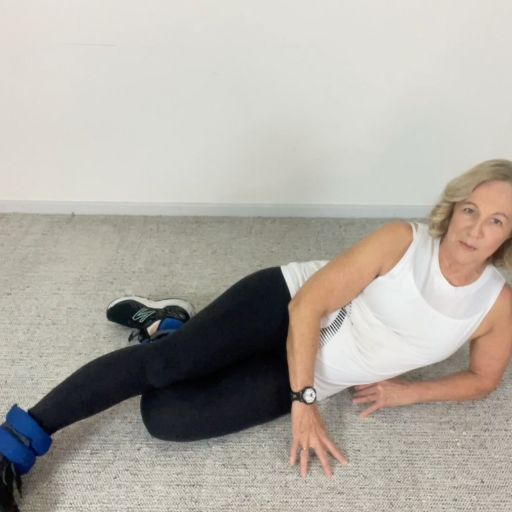
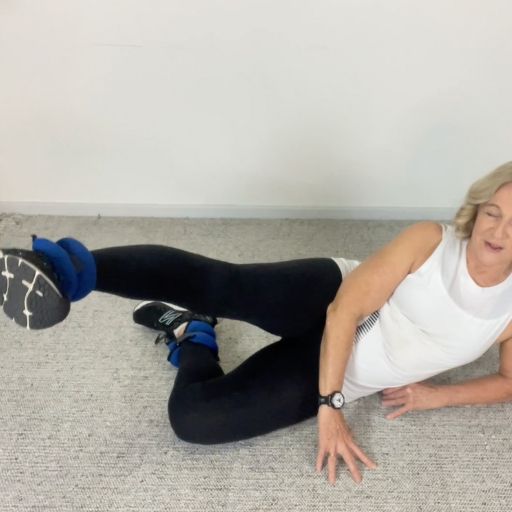

Forward 45° Leg Raises:
- So lying on your side on the floor, and one leg tucked under, and the top leg 45° forward.
- Lift the top leg up so it's straight, maintaining the 45° angle, hold and return.
- Now remember, before we lift the leg squeeze your glutes to activate them.
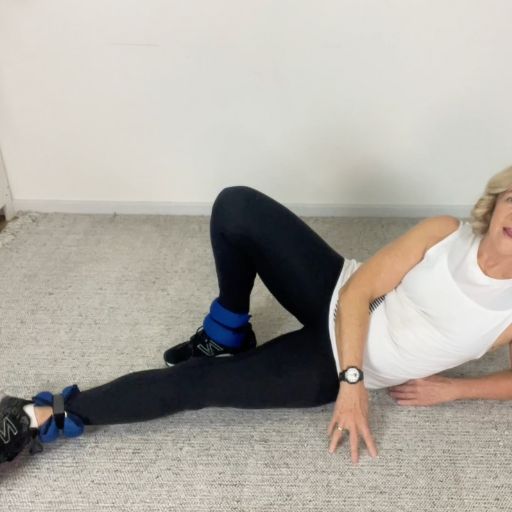
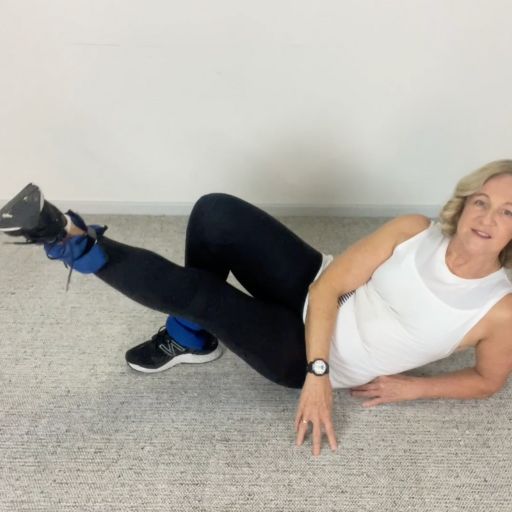
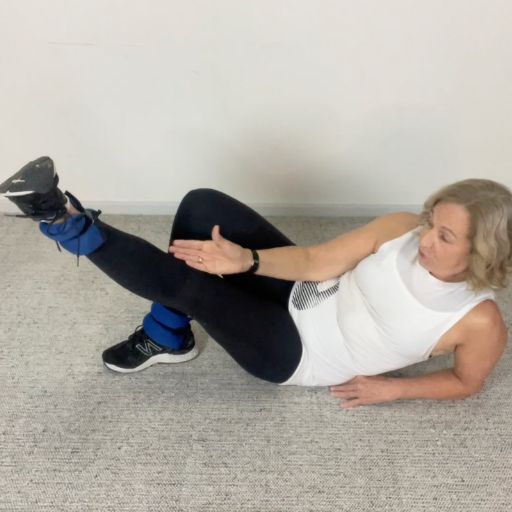
Inner Thigh Leg Raises:
- So lying on your side on the floor, and one leg bent with foot flat on ground behind the forward straight leg.
- Lift the front leg up so it's straight, hold and return.
- I can feel my inner thigh working because if we get knee pain on that inner part of the knee, we need this inner thigh working as well. It's not to be negated. It's also something really important. And if we work that, we can help to support that whole knee.
- Now remember, before we lift the leg squeeze your glutes to activate them.
Final Thoughts
Well done on your effort. These four moves can help you strengthen muscle around the knee.
Remember: progress takes time. Nobody gets to the goal straight away, but with consistency, your body can transform.
Let me know how you go, and keep moving strong!
